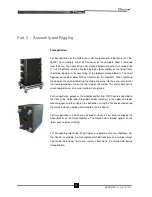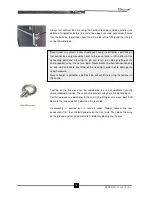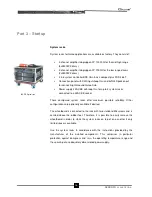
SEEBURG acoustic line
19
Sound optimisation
In order to be able to fully utilise the performance capability of the Galeo
system, you should adapt the sound system to the prevailing conditions and
the respective setup at each location.
The actual size of the sound application area should have already been
predetermined during the EASE Focus simulation. The absolute throw is often
less important than the production of superb sound between the stage and
FOH position.
When optimising, use music you are totally familiar with as well as tried and
tested computerised measuring technology, incorporating a sufficiently linear
measuring microphone. For frequencies below 1kHz we recommend boundary
surface measurement for the purpose of which the microphone is laid on the
floor. Ensure that the floor is reverberant in the vicinity of the microphone. For
optimisation of frequencies above 1kHz the microphone is placed on a normal
microphone stand. Never effect optimisation based on one single microphone
position, but on the average of several measurements over the entire audience
area. This is the only way to ensure that the majority of listeners will benefit
from optimum results. As a rule slight dips in the frequency response curve will
be less irritating than narrowband peaks, this being the result of psycho-
acoustic spectral occlusion.
In the case of loud music reproduction do not attempt to equalise to a linear
frequency response but, as a first approximation, towards an off-peak curve
from low to high frequencies with slightly raised bass.
It may become necessary to lower frequencies within the 2….4kHz region, as
the ear is relatively sensitive within this range.
Potential optimisation target curve
Содержание Galeo System
Страница 20: ...SEEBURG acoustic line 20 Appendix ...


































